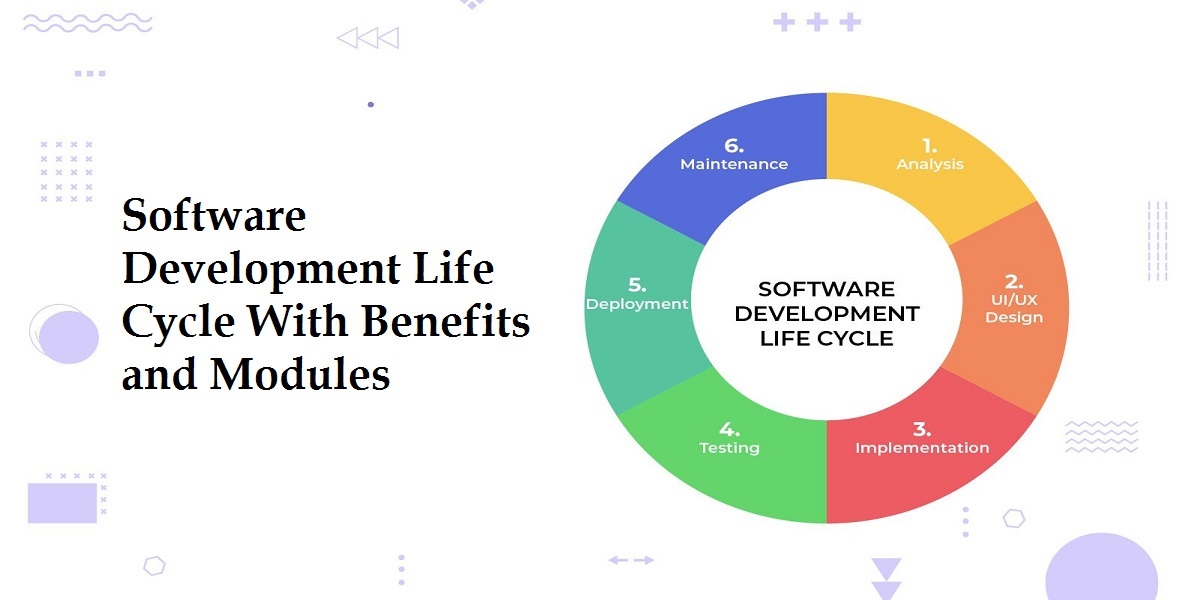
Software has now turned into an integral part of any industry. Software helps to conduct the procedures smoothly and accurately in large enterprises, industries, and businesses. Software developers here play a major role in solving the Software Development Life Cycle With Benefits and Modules werful complexion of any process. Generally, the necessity of software development services is quite high in the market. Software developers work closely on various functionalities and newer trends.
In order to progress together with all of it, the software development life cycle has come into existence. The whole cycle is designed with necessary prerequisites. Let us have a look over the software development life cycle and its benefits and modules.
Software Development Life Cycle
The software development life cycle works as a methodical and systematic process to construct software and demonstrates mobile applications. The software development life cycle assures that the quality of the work remains proper along with having a smooth outreach and accuracy to the end product. The outcome of SDLC is keen software according to the software demand. The whole time constraint of any project depends on the cost and time incurred upon the SDLC. SDLC helps to gratify the successfulness of any vision-related to the software.
In earlier days, the Software development life cycle used to mean the development of large scale business functional systems related to business entities. At that time, informational activities and systems used to get concluded by data processing and number crunching.
But nowadays, constructing good quality software includes the phases of the software development life cycle.
Stages of Software Development Life Cycle
Requirement Collection and Analysis
It is considered as one of the primary steps where all the business requirements are procured from the customers through their habits. Then the details are needed to discoursed through stakeholders and specialists.
This step is also inclusive of creating a software requirement specification and thoroughly discussing it with the developer. You also discuss resources, budgets, and systems with the experts. This way the project becomes secured and protected. Elaborating the product’s features is important.
Planning
This phase of the project includes the research and development planning of the product and discussion of the plan with clients and stakeholders. This step also takes up a bit of time in the identification of advantages and disadvantages of present software.
You should also depend on the consumers’ feedback where there can be surveys, puzzles, questionnaires. It is vastly important to understand the customers’ word and what they really want.
It is important to remember that the client always wants error-free software. The soundly conducted planning stage achieves its desired progress within the limitation.
Designing
Once the software requirements specification is over, the architectural heads will create design document specifications. This document comprises the features, budget, and time estimation of the project. Developers start from this document. Although DDS is approved by the stakeholders.
Developers are responsible for enhancing the efficiency and productivity of the product. Designing is the stage where the product is made attractive. A standard and adherence and remote architecture is the key to designing.
Implementation and Development
It is basically the actual development stage of the product. Depending on the DDS, the developers will create the coding of the product. In order to build a proper coding language, in this phase, the developers are required to communicate with the quality assurance team and project managers.
The testing stage is also concluded by the developers as they proceed to progress significantly. Data management and data recording are also pursued in this stage to provide clarity to the product.
Integration of Functionality
Focusing on the client’s budget, the essential and trending features are included in the software development life cycle.
Testing
In this stage, the quality assurance testers pass through the codebase and identifies the errors. If issues are found out, the developers rectify them and finish it as a flawless product.
Deployment
Activating the prototype model in the process before planning helps you to understand the major challenges in the development phase. The stage basically consists of deploying the software and launching it in the market.
Maintenance and Improvement
This stage comprises of creating the reports for improving the product after receiving the feedback and suggestion from the consumers and market. In this stage, the product is upgraded and maintained according to the market demands.
Benefits of the Software Development Life Cycle
If the software development life cycle is conducted smoothly, the mobile application developer will end up with a marvellous product that can be recommended. The advantages and benefits of this are respectively;
• Time and money efficient.
• Smooth and transparent communication within the team members.
• Enhancement of the development speed.
• Minimization of the risk potential.
• Development of a high-quality product.
• The luxury of repeating the product again.
• The development team will have entire control over the product.
• With a good product, the customer will be satisfied and content.
• There remains no possibility of a budget or deadline breach.
• There remains transparency within the groups.
• The development stage remains upgraded and advanced with the cloud.
